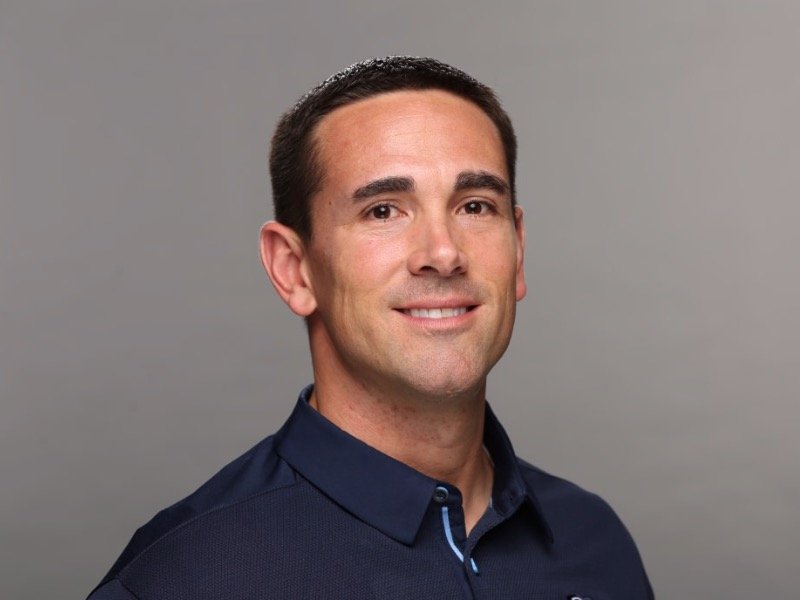After consecutive sub-.500 seasons for the first time since 1990-91, the Green Bay Packers have turned to 39-year-old Matt LaFleur to pick up the pieces in Titletown.
LaFleur, who signed a four-year deal with a team option for a fifth season, will be on his sixth job in seven years as he's bounced from the Redskins to Notre Dame to the Falcons, the Rams, the Titans and finally the Packers since 2013. His one-year stint in Tennessee offered him his first chance to call plays at the NFL level, and though the Titans ranked only 27th in points per game this season, he has been around some of the brightest offensive minds in the game.
Here are three priorities for LaFleur as he enters his first offseason in Green Bay.
1. Establish a relationship with Aaron Rodgers
It’s no secret that things got a bit sticky between Rodgers and Mike McCarthy during the end of the latter’s 11-year run in Green Bay. But no matter how prickly Rodgers’ personality appears to be from the outside, LaFleur must be in lock-step with the 35-year-old signal caller.
The Packers have locked down Rodgers through 2023, which will keep him in the green and gold through his age-39 season. That certainly isn’t young, but take a quick look around the league, and you’ll see 41-year-old Tom Brady, 39-year-old Drew Brees and 37-year-old Phillip Rivers still leading teams into the second weekend of the postseason. If LaFleur can capture Rodgers’ undivided attention and trust, then the Packers will once again be playing football deep into January. But if LaFleur can’t crack the code, both the coach and QB could be walking out the door in the not-so-distant future.
2. Better utilize the existing offensive talent
Namely Jimmy Graham. The nine-year vet still finished in the top 10 among all tight ends in receptions (55) and receiving yards (636) last season, but his two touchdowns were a far cry from the nine scores he averaged per year over his first eight seasons in New Orleans and Seattle. Graham’s production was especially disappointing after the Packers shelled out a three-year, $30 million contract for him last offseason, though his numbers were hindered by playing through a thumb injury over the last six weeks.
Now, no Tennessee tight end saw more than 30 targets last year in LaFleur’s offense, and Rodgers has never really found his own premier tight end connection like some of his aforementioned peers. If Davante Adams is going to see double-teams on the outside more often than not, LaFleur must create an offense where the Rodgers-Graham pairing equates to more than two touchdowns and a 61.8 percent catch rate (24th among the 28 tight ends who saw at least 40 targets this year). Still, Graham was targeted 89 times in 2018, which is the second-most opportunities a Green Bay tight end has seen in the Rodgers era. (Jermichael Finley saw 92 targets in 2011.) The foundation of a positive link between Rodgers and his 6-foot-7 route-runner already exists; LeFleur just needs to help it blossom.
Elsewhere on the offense, LaFleur now has a couple of intriguing toys to rebuild Green Bay’s once-dynamic unit. Marquez Valdes-Scantling and Equanimeous St. Brown both showed promise as rookie wideouts, and while they need to improve their game-to-game consistency, the two youngsters did well in overcoming the first-year hurdle many first-year receivers face. In the backfield, Aaron Jones emerged as a potential star in the brief spell between his early-year suspension and season-ending injury, while Jamaal Williams showed some ability as a thumper between the tackles down the stretch (253 total yards on 37 touches in Weeks 15 and 16). All four players – plus receiver Geronimo Allison – are under 25 years old.
If LaFleur can put some polish on the Packers’ young supporting cast and effectively weaponize Graham in the red zone, then Green Bay may have a dark-horse claim as one of the best skill position units in football to go with Rodgers and Adams.
3. Find improvements on defense and special teams
The Packers ranked 29th in both defensive and special teams efficiency (via Football Outsiders’ DVOA ratings) in 2018, joining the wobbly Buccaneers as the only two teams to finish in the bottom five in the NFL in both categories. The Green Bay front office brought in LaFleur to ignite change on the offensive side of the ball, but the Packers desperately need to clean up miscues in the other two areas as well.
The man in charge of the 2018 defense, defensive coordinator Mike Pettine, appears likely to retain his job. And there are some bright spots on this unit, including the defensive line with Kenny Clark and Mike Daniels, as well as the young cornerbacks. Unfortunately, the pass rush – outside of linebacker Kyler Fackrell – left a lot to be desired, as did the safety play following the midseason trade of Ha Ha Clinton-Dix.
The Packers do have 10 picks in the 2019 NFL Draft, highlighted by two first rounders. This incoming rookie class appears to be loaded with defensive talent, meaning Green Bay could find difference makers in the draft as early as its 12th overall pick. (CBS Sports’ most recent mock draft has the Packers taking touted Alabama safety Deionte Thompson in that spot.) The Packers also have three selections in the final two rounds and roughly $32-36 million in cap space, some of which should be used to fortify the depth chart on both defense and special teams.
LaFleur is not stepping into an easy role. The Packers’ roster is chock-full of high-end talent with flexibility to improve, but Green Bay does not have time to waste as it attempts to put the pieces together. The clock is already ticking on the Matt LaFleur era.







